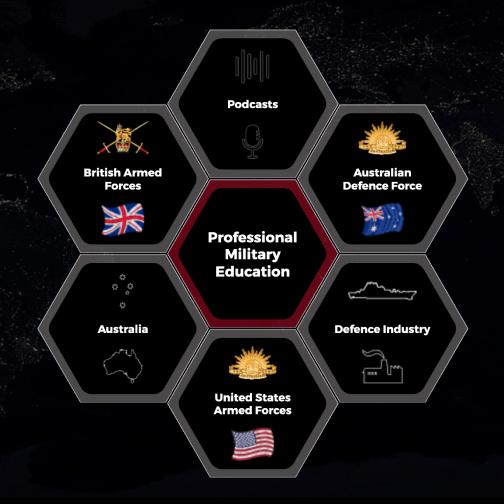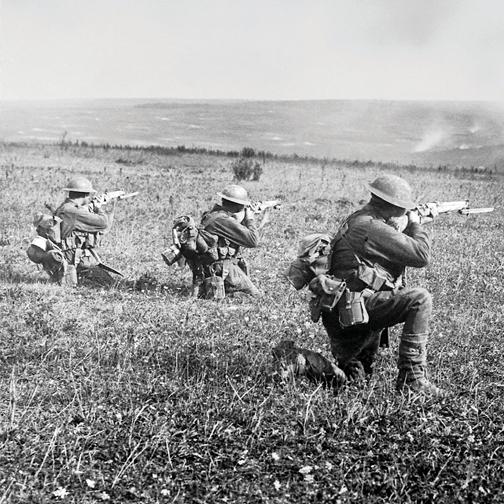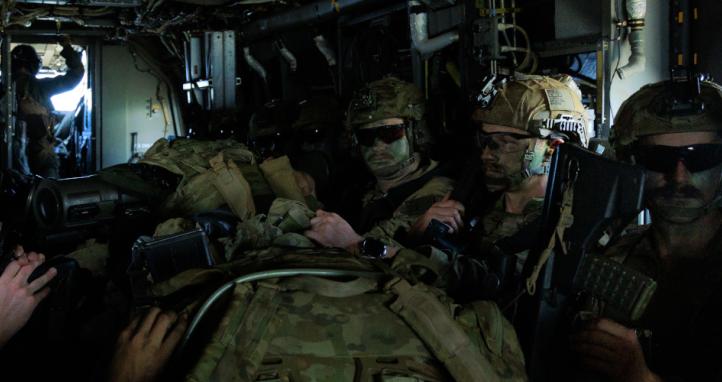The 2024 National Defence Strategy (NDS) mandates rapid change, demanding a ‘fight tonight’ mindset and a force capable of combined-arms combat and long-range strike operations across the Indo-Pacific[1]. However, a dangerous chasm opens between this forward-leaning strategic doctrine and the Australian Army’s lumbering institutional reality. This creates an Adaptation Gap: a critical vulnerability where an institutional culture and procurement process that is slow, centralised, and risk-averse consistently undermines the stated requirement for battlefield speed and agility. This disconnect is not a failure of strategic vision at the top, nor a lack of ingenuity at the tactical edge. Rather, it is a systemic friction in the institutional “frozen middle”: the cohort of managers and bureaucrats whose processes and cultural norms disconnect strategic intent from soldier action. A system optimised for delivering exquisite, long-horizon capabilities is fundamentally misaligned with the contemporary demand for rapid, iterative, and user-driven adaptation.
Closing this Adaptation Gap is therefore the primary enabler for realising the NDS’s vision of a future-ready force. It requires a profound cultural shift that can be initiated today through low-cost, high-impact measures. This analysis advocates for a bottom-up innovation ecosystem, deliberately cultivated to augment, not replace, the existing framework for capability development. By trusting and empowering soldiers to solve their own problems, Army can unlock the vast reservoir of latent ingenuity within its ranks, generating tangible capability at the speed of relevance and ensuring it is truly empowered to be the integrated force’s experts in land combat[2].
The Demand Signal: The Character of Accelerated Warfare
At its core, the Australian Army is conceptually preparing for a hyper-modern, fast-paced conflict while its innovation and procurement systems remain structured for a predictable, industrial-age one. This doctrine-delivery disconnect is a fundamental vulnerability that risks failure on the future battlefield. The strategic environment demands an organisation that can learn and adapt inside an adversary’s decision cycle, yet our internal machinery remains wedded to an industrial-age model: methodical, bureaucratic, and slow. Modern conflict, exemplified by the war in Ukraine, is now characterised by the rapid proliferation and innovative use of low-cost, commercially derived, and lethally effective technologies. Unmanned autonomous systems (UAS) have fundamentally altered battlefield geometry, enabling precision strikes at a fraction of the cost of traditional systems. Ukraine’s rapid innovation, shifting from artisanal, crowd-funded drone production in workshops to a national goal of producing 5 million drones in 2025[3], stands in stark contrast to Australia’s traditional, ponderous, and centrally managed programs. This environment, where tactical advantage is fleeting and dependent on continuous, iterative adaptation, is precisely the future for which the Army’s own Accelerated Warfare doctrine is intended to prepare the force[4]. The doctrine accurately identifies the need for speed and continuous adaptation, as well as the importance of integrating insights from business and technology to eliminate outdated practices.
This new character of conflict is driven by “super-exponential acceleration,” where technologies like artificial intelligence (AI) not only advance rapidly but also catalyse growth in other fields, creating a convergence that causes the rate of change itself to accelerate[5]. The demand signal is clear: victory will not belong to the side with the most advanced technology in a decade, but to the side that can field a good solution today and a better one tomorrow. This is exactly what Accelerated Warfare anticipated: an operating environment that forces us to learn, adapt, and integrate faster than our adversaries.
The Reality: The Industrial-Age Model
The challenges facing Army’s innovation apparatus are not unique; they are symptoms of the organisational inertia common to large, hierarchical institutions.[6] This inertia is reinforced by a strong path dependency on outdated administrative models, characterised by legacy processes and cultural norms that resist the pace of modern technological advancements. These flaws are outputs of a risk-averse culture. The “frozen middle” is incentivised to prioritise process compliance over mission outcomes, the path of least career risk. A system that punishes failure more than it rewards success will inherently breed a culture of risk aversion. Any solution must address not only the processes but also the underlying cultural incentives that perpetuate them.
Dawn of the Digital Age – Super Exponential Acceleration
The digital age has already dawned within the ranks. The 2024 Work Trend Index reveals that 84% of Australian knowledge workers already use AI[7]. This implies a latent digital workforce of potentially 20,000 soldiers and officers already engaging with AI. This “Bring Your Own AI” (BYOAI) phenomenon, where 78% of global users leverage personal AI tools, is a response to overwhelming workloads and administrative friction[8]. Soldiers are using these tools to manage the daily, mundane frustrations of paperwork, personnel updates, and reporting that consume cognitive bandwidth.[9]
Mandating an approved Commercial-Off-The-Shelf (COTS) AI model would be a profound cultural intervention. It would sanction this bottom-up drive for efficiency, turning a potential security risk into an engine of discovery. By providing a secure platform, the Army legitimises experimentation and gives soldiers the tools to solve their own problems. The path forward is not a bespoke “ArmyGPT” but a “commercial-first” approach, emulating the U.S. Department of Defense’s recent contracts with leading firms like OpenAI, Google, Anthropic, and xAI[10] and the UK’s AI Playbook[11].
Case Study: Blueprints for Bottom-Up Innovation
This proposal for a parallel innovation ecosystem is not novel; it is a proven model used by allied militaries. These programs connect empowered tactical users with resources and senior sponsors, bypassing institutional friction.
The US Air Force AFWERX Model: AFWERX functions as a dynamic interface between operators and innovators, deliberately fostering a culture of rapid problem-solving by connecting Airmen and Guardians directly with technology developers and embedding scientists and engineers directly with operational units to solve real-world problems rapidly[12]. It uses agile contracting to accelerate the transition of novel capabilities from small businesses into the hands of warfighters[13].
The Royal Navy’s Naval AI Cell (NAIC): The NAIC empowers small teams of junior personnel with delegated budgets through Workflow Automation Guilds to solve specific problems using COTS AI[14]. It also mandates Reverse Mentoring, where senior leaders are mentored by junior members, ensuring an unfiltered understanding of the technology’s potential[15].
The US Army’s ISV as an Innovation Platform: Leveraging 90% COTS parts, the simple, low-cost Infantry Squad Vehicle (ISV) has become an ideal platform for experimentation. Conceived as a simple, low-cost COTS troop carrier, the ISV was never intended to be a revolutionary platform. However, its very simplicity, low cost, and widespread availability have made it an ideal testbed for bottom-up innovation. Startups and soldiers are now using the ISV as a dynamic “laboratory” to experiment with autonomous navigation kits, modular sensor payloads, hybrid-electric drives, and AI-enabled mission systems. Because the platform is inexpensive, soldiers can test emerging technologies in the field without risking a multi-million-dollar asset.[16]. The ISV model proves that breakthrough innovation does not require a new, bespoke program of record. Instead, it can evolve incrementally, in the field, by treating existing or simple systems as adaptable platforms for experimentation. It is cheap, flexible, soldier-tested, and delivers capability at the speed of relevance.
Conclusion: From Adaptation Gap to Decisive Edge
The Adaptation Gap is a present and growing vulnerability that directly undermines the NDS. The chasm between a 21st-century doctrine and an industrial-age innovation system exposes the Army to strategic risk. Waiting for the perfect, ‘exquisite’ capability delivered through cumbersome processes is a proven strategy for obsolescence. Closing this gap requires a cultural shift cultivated from the bottom up. The solution lies in augmenting the slow, deliberate acquisition system for major platforms with a parallel, fast-moving, and soldier-driven ecosystem for rapid adaptation. This dual-track approach strikes a correct balance between institutional rigour and tactical agility.
The deliberate and secure rollout of COTS generative AI is the most effective catalyst for this new ecosystem. It is a low-cost, high-impact initiative that reclaims productivity from administrative burdens and empowers the tactical edge to solve their own problems. It transforms the latent digital skills within our ranks into a sanctioned, secure, and scalable innovation engine. By trusting, training, and equipping its people with the tools and frameworks to innovate responsibly, the Army can bridge the Adaptation Gap, turning a critical vulnerability into a source of decisive, asymmetric advantage. This fosters a culture of continuous adaptation that moves at the speed of relevance, ensuring the Army is tangibly equipped with an innovation overmatch to meet the “fight tonight” challenge and win.
End Notes
[1] Department of Defence, 2024 National Defence Strategy, https://www.defence.gov.au/about/strategic-planning/2024-national-defence-strategy-2024-integrated-investment-program
[2] Australian Army, Our Mission, https://www.army.gov.au/about-us/who-we-are/our-mission
[3] Center for Strategic and International Studies,“The Russia-Ukraine Drone War: Innovation on the Frontlines and Beyond,” https://www.csis.org/analysis/russia-ukraine-drone-war-innovation-frontlines-and-beyond
[4] Australian Army Research Centre, Accelerated Warfare, last updated 17 May 2021, https://researchcentre.army.gov.au/library/other/accelerated-warfare
[5] Luka Baklaga, “The Role of AI in Shaping Our Future: Super-Exponential Growth, Galactic Civilization, and Doom,” Journal of Computer Science and Technology Studies, 6, no. 4 (2024): 112–130, https://doi.org/10.32996/jcsts.2024.6.4.14
[6] Samuel P. Huntington, The Soldier and the State: The Theory and Politics of Civil–Military Relations (Cambridge, MA: Belknap Press of Harvard University Press, 1957
[7] AI at Work Is Here. Now Comes the Hard Part,” WorkLab / Work Trend Index, 8 May 2024, https://www.microsoft.com/en-us/worklab/work-trend-index/ai-at-work-is-here-now-comes-the-hard-part
[8] AI at Work Is Here (n. 6).
[9] Ashley Dotterweich, “Digital Process Automation in Defense: 5 Ways to Streamline Operations,” Mattermost Blog, 25 March 2025, https://mattermost.com/blog/digital-process-automation-in-defense-5-ways-to-streamline-operations/
[10] John K. Waters, “Defense Department Awards AI Contracts to Leading Tech Firms to Boost National Security Capabilities,” Pure AI, 14 July 2025, https://pureai.com/articles/2025/07/14/ai-vendors-get-defense-contracts.aspx
[11] Artificial Intelligence Playbook for the UK Government, published 10 February 2025, https://www.gov.uk/government/publications/ai-playbook-for-the-uk-government/artificial-intelligence-playbook-for-the-uk-government-html
[12] AFWERX, Unleashing American Ingenuity, https://afwerx.com/
[13] “The Air Force Helms Innovative Programs with AFWERX SBIR,” Team 80 (blog) (online), https://team-80.com/blog/afwerx-sbir/
[14] Francis Heritage, “Grassroots AI: Driving Change in the Royal Navy with Workflow,” CIMSEC, 23 October 2024, https://cimsec.org/grassroots-ai-driving-change-in-the-royal-navy-with-workflow/
[15] Heritage, Grassroots AI
[16] John G. Ferrari, “How an Army Truck Is Beating the Pentagon at Innovation,” American Enterprise Institute, 25 September 2025, https://www.aei.org/op-eds/how-an-army-truck-is-beating-the-pentagon-at-innovation/










"A system optimised for delivering exquisite, long-horizon capabilities is fundamentally misaligned with the contemporary demand for rapid, iterative, and user-driven adaptation. .... the Australian Army is conceptually preparing for a hyper-modern, fast-paced conflict while its innovation and procurement systems remain structured for a predictable, industrial-age one. ... victory will not belong to the side with the most advanced technology in a decade, but to the side that can field a good solution today and a better one tomorrow."
Thanks also for pointing to blueprints of alternative models.
What I'd love to read and see examples are of what could or would or does look different using a different approach.
I'll watch this space and look forward to your next article(s).